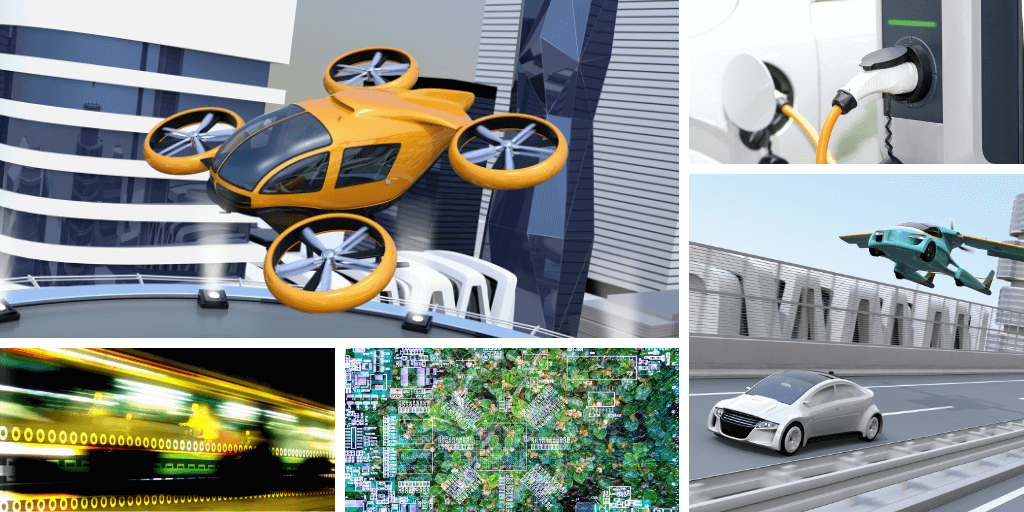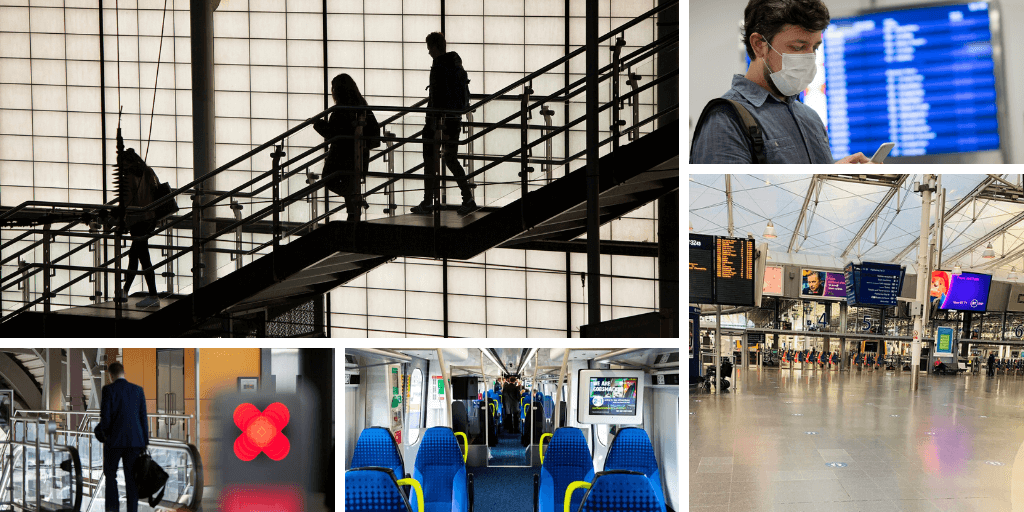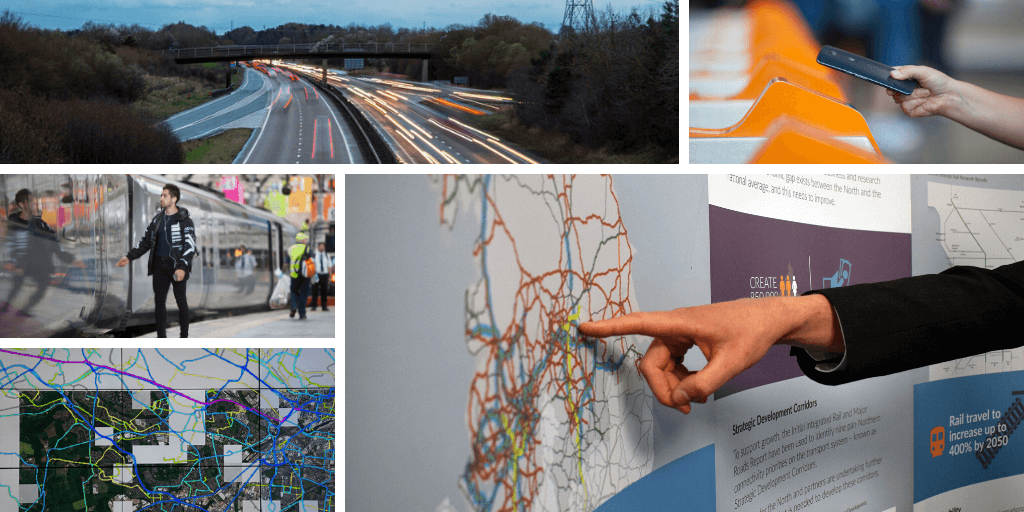During our Future Transport blog series, featuring Transport for the North and guest authors, we will explore some of the different components and provide further insights on our Future Scenarios and our approach to tackling those big questions about the future. To launch our the series, TfN’s Simon McGlone and Jack Snape tell us how we’re developing a strategy for an unknown future.
Launched in February 2019, Transport for the North’s (TfN) Strategic Transport Plan and Investment Programme set out the blueprint for enhancing transport across our region through to 2050.
In developing this plan, we had to consider questions such as “How can you know what the world looks like in 2050?” and “Where will we need to go and how will we get there?”. These considerations have become more prominent given the changing global circumstances during 2020.
Future Transport is a term used in the transport world to define the new and changing methods people use to get around, and how we can use the transport system to enable our daily activities.
The Government Office for Science and the ‘How’ section of our STP suggest that Future Transport will combine behaviour change, active travel, technology measures, shared mobility, customer information and data, automated and digital systems; as well as having a focus on the integration of energy and transport infrastructure.
But to support the resilient and integrated delivery of our vision, we must go further than this to deliver a holistic view. This means also considering a broader range of drivers of change, including new technology uptake and acceptance; social behavioural change and inclusivity; climate change action; and spatial planning policy. All of these aspects will affect how we, the customer, get from A to B in 2025 (or 2030, 2040, etc), and inform the travel demand forecasts that support TfN’s decision making.

On hearing ‘Future Transport’, you might think of the predictions seen in futuristic movies. Back to the Future II promised us hoverboards in 2015. Blade Runner depicted flying cars in LA during 2019, although perhaps the Jetsons got it closer at 2062?
Steven Spielberg’s Minority Report saw a world of drones, autonomous vehicles and digital implants in 2054, or maybe we’re heading towards a more dystopian vision of Waterworld following the melting of all polar ice caps.
We’re a bit behind schedule on hoverboards and flying cars, but there is still time for some of these changes to come true. Technology over the last 20 years has proven there are many different ways the future could turn out, so how can we predict what transport we’ll be using?
The idyllic end-state of Future Transport is often seen as a world where transport seamlessly connects people’s lives, where consumers are able to get from A to B in a way which is cheaper, integrated and more efficient; and our journeys become productive, safe and sustainable extensions of our day-to-day routines. It may also see a movement from traditional transport product ownership towards a Mobility as a Service scenario, which would provide personalised transportation options through various sharing and payment options using the open data community.
All very well, but the pathway to this world could take various directions, with different resulting end states. As public and private transport evolves to meet the changing needs of the user, these trends pose both risks and opportunities, which require strategic adaptive planning. For TfN, this is where our Future Travel Scenarios come in.

Whilst our scenarios are focused on the longer-term, we can’t lose sight of the fact that current global challenges to tackle Covid-19 are creating significant additional uncertainty. This is changing the way we move and more fundamentally what we deem as important. There will likely be at least a partial reversion to trends before the lockdown, but some changes will stick and other new trends will emerge as society aims to recover from the crisis.
As an example, a study by Savanta using their B2B covid-19 tracker indicates 65% of SMEs and 93% of larger businesses (who complete the tracker) plan to change working practices permanently in a post-pandemic situation. The ability to work from home will vary by industry type and technological capability, however of the businesses who responded to the ONS UK Business Impact of Coronavirus Survey, the average proportion of the workforce that was working remotely from their normal place (between 23 March to 5 April) was 48%. Many of these factors will affect the way we travel, whether it’s new economic models to boost the recovery, increased working from home, or distancing on public transport.
This makes it even more important to build tools which allow for more effective assessment of what these trend changes may mean. Although we built our scenario narratives pre-crisis, we believe that the aspects captured still represent a range of plausible longer-term futures.
Changes that TfN and its Partners were already mindful of, such as sustainable transport; active travel; working patterns; and new transport modes are all coming to the fore during this period. Our tools will give us the basis for further interrogation of new trends, based on evidence as it develops. We will address this issue head-on as we finalise the detail to ensure that we have a clear story about how each future is arrived at from our current circumstances – supporting an ambition of ‘building back better’.
Just like the sci-fi films, our Future Scenarios will look to build carefully constructed plots and stories, based on wide-ranging drivers, trends and intelligence.
Scenario planning is a futures technique used to inform medium to long-term strategic analysis and planning. It helps future-proof our decision making, as far as is possible, and ensures informed vision-led strategic transport planning, which confidentially navigates future uncertainties and is resilient to wide-ranging and cross-sector uncertainties. This is done with the ultimate goal of shaping the future to our preferred vision, rather than reacting to it.
Our Future Travel Scenarios are a shared understanding of the broad range of factors affecting current and future transport in the North of England. Scenarios are not predictions, but rather plausible descriptions of what could happen. They are not intended to be ‘right’ or ‘wrong’, ‘good’ or ‘bad’ statements, but are devices to help us explore and agree (as well as challenge and stretch) our shared understanding of the alternative ways the transport landscape might develop, and the actions we might take. They will reveal uncertainties by opening up cross-cutting issues and trade-offs, and help us to test and identify future strategies capable of delivering the North’s shared vision.
Lateral thinking across different areas of policy is particularly important to TfN, to avoid siloed planning and unintended consequences, and achieve a wider range of co-ordinated benefits for the public and businesses.
Successful Future Transport will need to be supported by much more integration of transport, energy, housing infrastructure and associated land use planning. This is consistent with the National Planning Policy Framework, which targets economic, social and environmental interdependences to deliver sustainable net gain across different strategic objectives.
That is why we are developing future scenarios that focus on a broad range of ‘cross-sector’ future uncertainties that may impact future travel demand. Developing a better understanding of influencing factors outside of the immediate transport system, will allow us to identify the solutions, collaborations and partnerships required to deliver vision of the future.
This includes the types of demand resulting from significant innovations and how our future mobility will be influenced by emerging global trends and potential changes in policy that are on the horizon – such as the banning of new petrol and diesel cars to achieve environmental goals. It also includes the level and direction of economic growth, the future distribution of population and employment, and the scale of the UK Government’s ambition in areas such as zero-carbon and ‘levelling-up’.

Our scenarios will explore how the world would change if trends such as these were to strengthen or diminish, or various events were to occur. This will provide a framework which allows the performance of transport strategies to be tested in a range of alternative futures. Using transport modelling we can estimate the impact (positive or negative) that each intervention or strategy will have within each future scenario. We can also use this analysis to identify preferred aspects of each scenario and identify external drivers that TfN may wish to support, influence or promote to ensure delivery of our vision for the North.
When we talk about future change, we need to be mindful of the here and now, as well as the wide range of possible futures we might encounter. Our scenarios will be used to plan strategies, provide confidence, make the case for interventions such as Northern Powerhouse Rail and Strategic Development Corridors (in building our wider Investment Programme), Integrated Smart Travel, and refine and shape TfN’s vision. To that end, they need to be seen as realistic and plausible, based on intelligence to hand in 2020.
This analysis is possible thanks to TfN’s Analytical Framework – an integrated system of data, computer models and appraisal tools that allow us to estimate the direct and wider impacts TfN’s transport strategies and policies.
In a previous blog, we described how we’ve been developing the Analytical Framework to explore the wider, more transformational impacts transport can have, especially when coordinated with wider spatial planning and economic development policies. Over the next few months, we will be representing our new set of Future Travel Scenarios within the Analytical Framework to quantify the potential changes in travel patterns that could emerge in each future. This will allow us to:
To deliver the above outcomes we will be working over the next few months to enhance our intelligence behind drivers of change and future trends, and test and apply our scenarios within the TfN Analytical Framework. These will then be applied to TfN’s business case assessment of transport interventions and strategies, to inform an updated Investment Programme for the North during 2021. We will also use this framework to consider our approach to other important factors such as decarbonisation.
Future Transport solutions can play a key role in making the most of our transport infrastructure, whether that’s through technology solutions to improve efficiencies and customer experience, supporting social change to encourage active travel, sharing or public modes as the preferred way to travel, or in pursuing rapid uptake of low and zero-emission vehicles and the supporting energy capacity.
Future Transport will also mean different things to different people and places, so we should not lose sight that it must be based on the people using the transport systems, and not just implementing shiny new technology or infrastructure because we can. Change can also be using our current infrastructure in more efficient and effective ways, and making changes to ensure different transport options more accessible to more people to improve access to opportunities.
One thing we can be certain of is it that the future will remain unclear to an extent. But by accepting that and using it to our advantage, we can decide which future uncertainties we want to tackle head-on and shape change to meet an agreed vision.